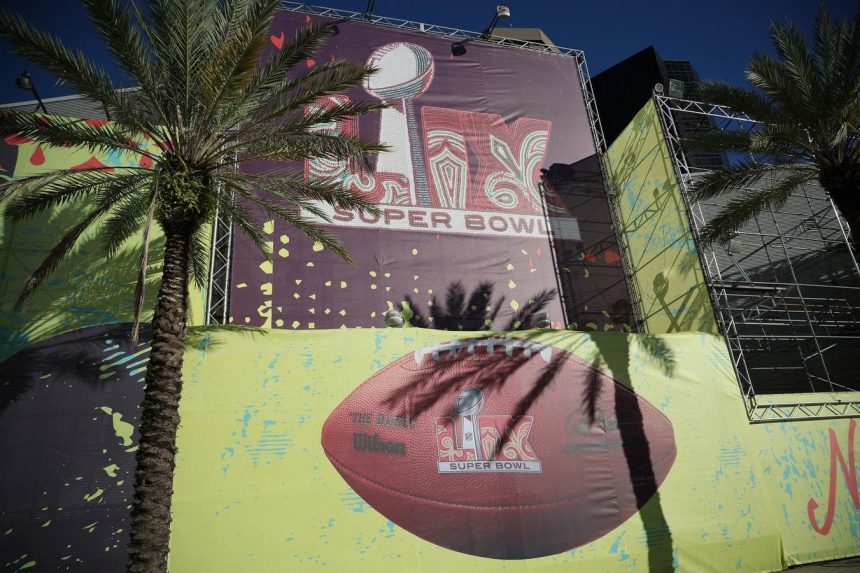Louisiana’s coastal crisis, marked by a devastating loss of wetlands at a rate equivalent to 2.5 football fields during the Super Bowl LIX game, serves as a stark backdrop to the NFL’s environmental initiatives surrounding the event. This land loss, primarily driven by sea level rise, hurricanes, levee systems, and sediment depletion, has dire consequences for Louisiana’s communities, wildlife, vital infrastructure, and its crucial role in the national economy. As climate change intensifies storms, rainfall, and storm surges, the problem is further exacerbated, threatening the state’s energy industry, its position as a national commerce hub via the Mississippi River, and its contribution to the US seafood market. The NFL, recognizing the urgency of this local environmental challenge with national implications, has partnered with community organizations to implement projects aimed at mitigating these impacts.
Central to the NFL Green’s Super Bowl LIX environmental program is the construction of a living shoreline using recycled oyster shells in Leeville, a community historically vulnerable to hurricanes and environmental disasters. This project, a collaborative effort involving the Coalition to Restore Coastal Louisiana (CRCL), special forces veterans, local government, and community volunteers, aims to slow erosion, buffer inland communities against storm surges, and create vital habitats for oysters and other wildlife. The symbolism of using oyster shells, a cultural cornerstone of New Orleans cuisine, resonates deeply, as shells collected from local restaurants are repurposed to rebuild the very ecosystems that sustain them. This initiative exemplifies the circular economy, diverting waste from landfills and utilizing it for ecological restoration. The 59 tons of oyster shells collected for Super Bowl 59 are meticulously sanitized and bagged, ready for deployment by volunteers during Super Bowl week.
The ecological benefits of oyster reefs extend beyond erosion control, as they enhance water quality, support biodiversity, and bolster local fishing industries. Danielle Brigida, of the World Wildlife Fund (WWF), emphasizes the importance of rigorous research to ensure that such projects do not inadvertently harm existing habitats, highlighting the potential of artificial oyster reefs to generate positive outcomes for both wildlife and local communities. While acknowledging that these projects alone cannot halt sea level rise, CRCL emphasizes their significance as tangible examples of how relatively simple, low-cost interventions can yield substantial positive change. Equally important is the engagement of local communities, leaders, and officials, fostering awareness and collaborative action to address these critical environmental issues.
The oyster reef project involves a unique partnership with Force Blue, a non-profit organization comprised of former combat divers, who will guide volunteers in placing the bagged oyster shells into the water. This collaboration highlights the dual purpose of the project, contributing to marine conservation while also providing a sense of purpose and engagement for veterans. The restoration efforts also include planting thousands of marsh grasses behind the reef, further stabilizing the area and creating additional habitat. These initiatives showcase the power of collective action and partnerships in addressing complex environmental challenges.
Beyond the oyster reef project, NFL Green and its partners are undertaking other community-focused environmental initiatives. In Hardin Park, a tree-planting project will provide much-needed shade and cooling for a playground, enhancing the quality of life for local residents. Another tree-planting effort in Madisonville, north of New Orleans, will stabilize wetlands and offer storm protection, demonstrating the multifaceted approach to environmental restoration. These projects, undertaken in collaboration with the Pontchartrain Conservancy, underscore the importance of community involvement and local expertise in creating sustainable solutions.
While the Super Bowl generates significant economic activity, it also leaves an environmental footprint, primarily through carbon emissions, waste generation, and resource consumption. The NFL acknowledges the need to mitigate these impacts and is working towards reducing its environmental footprint through recycling, waste diversion, and donation programs. However, the exact environmental footprint of the Super Bowl remains undisclosed. The league emphasizes the importance of collective responsibility in tackling climate change, highlighting the potential of the Super Bowl’s massive global platform – reaching over 185 million viewers worldwide – to promote environmental awareness and inspire action among fans, businesses, governments, and NGOs.
The Super Bowl’s environmental initiatives, particularly the oyster reef project, represent a significant step towards addressing pressing environmental challenges while engaging local communities. However, the scale of these initiatives relative to the event’s substantial environmental impact remains a point of discussion. The league’s global reach and influence provide a unique opportunity to amplify its environmental message and implement more comprehensive sustainability strategies, moving beyond symbolic projects towards more substantial and impactful environmental action. This includes transparently measuring and reporting on the Super Bowl’s environmental footprint, setting ambitious reduction targets, and leveraging its platform to advocate for broader systemic change in addressing climate change and environmental degradation.



